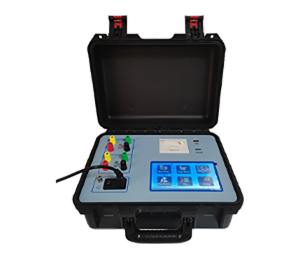 English
English


cloud point tester
Exploring the Cloud Point Tester A Key Tool in Oil and Fuel Quality Assessment
In the oil and fuel industry, ensuring quality is paramount. One of the essential tools used to assess the properties of petroleum products is the cloud point tester. This instrument is designed to determine the temperature at which wax crystals begin to form in a petroleum product, which is critical for understanding its performance in colder environments. In this article, we delve into the significance, function, and application of cloud point testers in maintaining fuel quality.
The cloud point of a fuel or oil is the temperature at which the hydrocarbon waxes present in the mixture begin to crystallize out of the solution, resulting in the appearance of a cloud. The presence of these wax crystals can significantly affect the flow and operability of fuels in lower temperatures, making it vital for suppliers and users to know the cloud point of their products. For instance, diesel fuels with high pour points may lead to operational challenges during winter months, affecting engine performance and potentially causing fuel blockages.
Cloud point testers operate by cooling a sample of the fuel or oil and monitoring the temperature at which the first signs of cloudiness can be detected. This process is often carried out in a controlled laboratory setting, ensuring accuracy and reliability. The samples are typically placed in transparent tubes, and the temperature is gradually lowered. Observers will note the temperature at which a distinct cloud becomes visible, indicating the formation of wax crystals.
cloud point tester

The results obtained from a cloud point test have direct implications for both manufacturers and consumers. For manufacturers, knowing the cloud point is essential for formulating fuels that will perform effectively under various climatic conditions. For consumers, especially those in regions with harsh winters, selecting the right fuel with an appropriate cloud point can mean the difference between a smoothly running engine and costly breakdowns.
In recent years, advancements in technology have streamlined the process of cloud point testing. Automated systems and digital readings have replaced some traditional methods, allowing for faster and more accurate results. These improvements have made it easier for laboratories and testing facilities to provide reliable data to oil companies and end-users, ensuring that quality control standards are maintained.
Beyond the immediate implications for fuel performance, cloud point testing is also critical from an environmental perspective. Fuels that perform poorly in cold conditions can lead to increased emissions and longer startup times for engines. By ensuring that fuel quality meets specific cloud point standards, companies can help minimize their environmental impact while improving the efficiency and reliability of their products.
In conclusion, the cloud point tester is a vital tool in the oil and fuel industry, playing a critical role in ensuring the quality and performance of petroleum products. By accurately determining the cloud point, manufacturers can create fuels that meet the demands of diverse climatic conditions, ensuring that consumers have access to reliable and efficient products. As technology advances, the importance of cloud point testers will continue to grow, safeguarding both operational performance and environmental sustainability in the fuel sector.
-
Differences between open cup flash point tester and closed cup flash point testerNewsOct.31,2024
-
The Reliable Load Tap ChangerNewsOct.23,2024
-
The Essential Guide to Hipot TestersNewsOct.23,2024
-
The Digital Insulation TesterNewsOct.23,2024
-
The Best Earth Loop Impedance Tester for SaleNewsOct.23,2024
-
Tan Delta Tester--The Essential Tool for Electrical Insulation TestingNewsOct.23,2024





